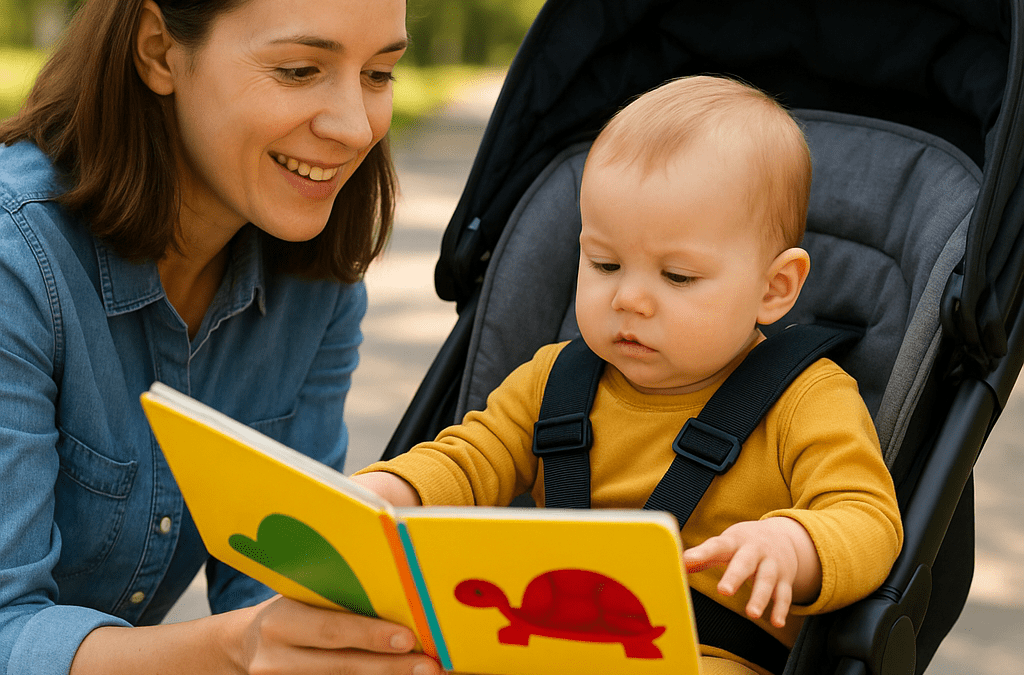Stroller rides are often viewed as a way to calm your baby or squeeze in some fresh air—but they can be so much more than that. With just a little intention, those daily walks become powerful moments for bonding, learning, and sensory development.
Babies’ brains grow faster in the first year than at any other time in life. And while floor time and playmats get all the credit, stroller time has its own unique opportunities for developmental support—if you know how to use it.
Here are three research-backed, parent-approved ways to turn your next stroller ride into a brain-boosting experience.
1. Narrate the World Around You
One of the simplest things you can do to support your baby’s language development is to talk to them—constantly. As you push the stroller, narrate what you see, hear, and do. Describe the colors of the trees, the sound of a barking dog, or the motion of cars driving by.
Even though your baby can’t respond in words yet, their brain is making critical connections through exposure. Studies show that babies who are spoken to frequently in the first year tend to develop stronger language skills later on.
And don’t worry about sounding silly. Repeating words, using exaggerated tones, or asking questions—even rhetorical ones—keeps your baby engaged and strengthens your bond.
2. Play Sensory and Listening Games
The stroller is the perfect place for gentle sensory play. Try pointing out textures, shapes, or temperatures as you pass by. “Look at that bumpy tree bark!” or “Feel the cool breeze on your hands.” You can also introduce sound games by stopping and asking, “Do you hear that bird singing?” or “What’s that loud truck noise?”
For slightly older babies, bring along a small musical toy or baby-safe mirror clipped to the stroller bar to explore during quiet moments. The mix of outdoor stimuli and parent interaction makes the experience rich and multi-dimensional.
It doesn’t have to be elaborate. Even just a few mindful prompts during your walk can help your baby become more aware of their senses—and start linking language to the world around them.
3. Read or Sing to Them on the Go
If your stroller has a snack tray or bumper bar, bring a board book with you and stop in a shady spot to read aloud. Reading outdoors combines the calming effect of nature with the proven benefits of storytelling—language development, memory skills, and emotional connection.
Singing works just as well, especially if your baby is a little fussy. Classic nursery rhymes, call-and-response songs, or even a made-up stroller tune about what you see can calm your baby and help their brain learn rhythm, sound patterns, and vocabulary.
If you’re walking in a park or along a quiet path, don’t be afraid to sing out loud. Your baby is your only audience—and they think you’re a superstar.
Final Thoughts
Stroller time isn’t just about movement—it’s a chance to fill your baby’s world with language, rhythm, connection, and exploration. Whether you’re talking about the clouds or singing “Itsy Bitsy Spider,” every interaction builds brainpower.
So next time you grab the stroller, remember: you’re not just taking a walk. You’re helping your baby grow in every way.

